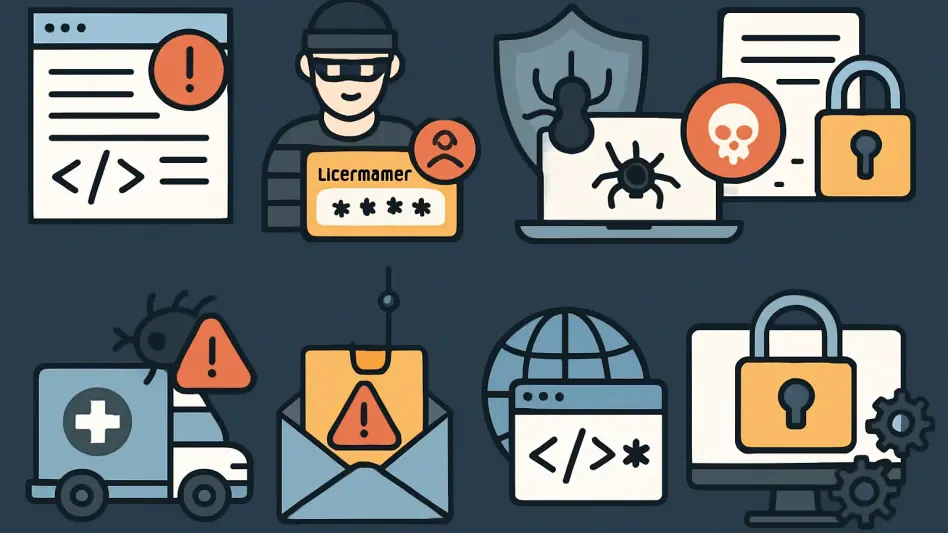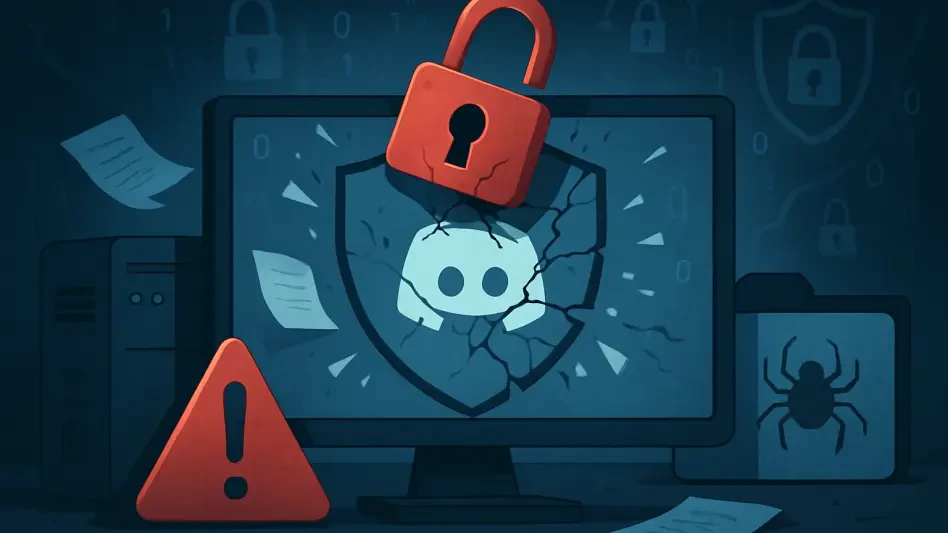As today’s digital and interconnected enterprises continue to evolve, the complexity and sophistication of cyber threats also rise, demanding advanced security monitoring solutions. Organizations face increasingly high stakes with data breaches potentially resulting in multi-million dollar losses, diminished customer trust, and long-term reputational damage. Consequently, the need for robust enterprise security monitoring tools that provide real-time visibility, rapid detection, and automated response has never been more urgent. Businesses aim to protect their digital infrastructures effectively while maintaining a competitive edge in cybersecurity.
Dissecting the Modern Security Landscape
Importance of Continuous Security Monitoring
In recent times, continuous security monitoring has emerged as a cornerstone of any effective enterprise security strategy. This approach involves persistently evaluating security measures to identify potential threats before they escalate into significant incidents. The ability to monitor security attributes continuously helps enterprises maintain data integrity and uninterrupted operations. Given the exponential increase in the volume and variety of cyber threats, organizations are compelled to adopt continuous security monitoring protocols to safeguard sensitive information. By proactively addressing vulnerabilities and ensuring compliance with regulatory standards, companies can notably reduce risks associated with costly data breaches.
The past few years have witnessed an increase in high-profile security breaches, making the implementation of real-time monitoring systems imperative. Many companies have turned to advanced Continuous Security Monitoring tools to stay ahead of attackers. These systems offer advanced analytics, enabling businesses to respond rapidly to threats and minimize damage. Continuous assessments also provide valuable insights, allowing organizations to refine their security strategies and optimize resource allocation. As a result, businesses equipped with such monitoring capabilities achieve enhanced resilience against cyber threats, ensuring sustained growth and performance.
Trends Influence the Security Sector
Several overarching trends currently shape the cybersecurity landscape as organizations endeavor to build comprehensive defense mechanisms. A predominant trend is the application of artificial intelligence (AI) and machine learning to enhance threat detection capabilities. These technologies empower security tools to analyze vast volumes of data in real time, identifying anomalies and potential breaches before they culminate in significant incidents. Leveraging AI allows enterprises to improve their threat detection efficiency significantly, reducing false positives and prioritizing genuine threats for timely response.
Automation also plays a pivotal role in transforming modern security practices. By automating routine tasks and responses, organizations can efficiently manage resources while reducing manual interventions. This shift toward automation not only enhances overall productivity but also allows security teams to focus on developing strategic initiatives. Additionally, cybersecurity tools emphasize seamless integration with existing infrastructures to accommodate evolving threats and organizational needs. The need for scalable and adaptable security solutions tailored to various business environments has underscored the importance of selecting the right mix of tools to suit specific security postures.
Leading Tools for Security Monitoring
SentinelOne Singularity™ and Splunk Enterprise Security
Among the many advanced tools organizations have adopted, SentinelOne Singularity™ stands out for its exceptional capabilities in AI-driven security information and event management (SIEM). Designed for use in autonomous security operations centers (SOC), this platform incorporates cutting-edge AI analytics to deliver real-time detection, empowering businesses to respond efficiently to threats. With its ability to ingest data from a multitude of sources—including endpoints, cloud environments, and identity systems—SentinelOne offers comprehensive threat hunting capabilities and reduces manual workloads by minimizing false positives. This AI-driven approach ensures security teams can concentrate on high-value strategic activities while maintaining robust defenses.
Conversely, Splunk Enterprise Security is lauded for its ability to provide unified visibility across hybrid and multi-cloud environments. This tool is particularly revered for its adaptability and is often employed by large organizations managing substantial data volumes. Its robust log analysis capabilities, customizable dashboards, and automated alerting mechanisms are complemented by its commitment to regulatory compliance. By leveraging compatibility with various data sources and frameworks, Splunk effectively adapts to evolving cyber threat landscapes. Consequently, Splunk remains an integral component of enterprise security strategies focused on maintaining regulatory compliance and cyber resilience.
IBM QRadar and Rapid7 InsightIDR
IBM QRadar remains a frontrunner among security monitoring solutions, known for its advanced correlation capabilities and centralized visibility. By correlating activities across diverse data sources—such as system logs, user activity, and cloud environments—QRadar offers high-level analytics capable of detecting known and unknown threats. This centralized monitoring approach minimizes alert fatigue, providing actionable insights that accelerate AI-driven investigations. As enterprises continue to seek comprehensive and proactive monitoring solutions, QRadar represents an optimal choice for businesses looking to enhance their incident response strategies and support informed decision-making processes.
Rapid7 InsightIDR provides Extended Detection and Response (XDR) capabilities, enabling organizations to unify endpoint forensics, log search, and insightful dashboards within a cloud-native platform. This user-friendly environment automates response rules and streamlines onboarding, thus simplifying processes for detecting, investigating, and remediating threats. By effectively correlating user behavior across various sources, InsightIDR offers an efficient solution ideal for organizations prioritizing scalability and efficiency. Through its comprehensive approach to threat detection, organizations using InsightIDR can efficiently allocate resources to guard against myriad cyber threats.
Strategic Security Monitoring Platforms
Syxsense and Microsoft Defender for Cloud
Syxsense specializes in vulnerability scanning, patch management, and endpoint security, offering businesses real-time visibility and automated remediation. With intuitive compliance reporting and an accessible interface, Syxsense simplifies maintaining and updating systems’ security attributes. Its agent-based deployment method scales effectively across large, distributed networks, making it suitable for enterprises with extensive geographic footprints. The platform’s ability to adapt to different network sizes underscores its importance for effective vulnerability management, thereby addressing critical security challenges faced by modern businesses.
Microsoft Defender for Cloud offers unified security management and advanced threat protection for organizations employing multi-cloud and hybrid environments. As cloud infrastructures become integral to business operations, tools like Defender are essential to maintaining robust security postures. It provides AI-driven threat detection capabilities alongside continuous compliance monitoring and vulnerability management features. Integration with leading SIEM solutions enhances its versatility, helping businesses meet stringent regulatory standards while ensuring their complex cloud environments remain secure. Defender’s proactive threat detection mechanisms ensure organizations can protect cloud-based assets effectively.
Specialized Solutions: Nagios, Lacework, and Sumo Logic
Tools such as Nagios, Lacework, and Sumo Logic provide specialized functionalities that cater to specific aspects of enterprise security needs. Nagios excels in infrastructure monitoring with customizable real-time alerts for hosts, systems, and networks. Its comprehensive monitoring capability ensures businesses can identify and address potential vulnerabilities in their infrastructure before they result in critical failures. Complementing Nagios, Lacework is renowned for automated threat elimination and compliance, particularly within major cloud platforms. Supported by AI-driven analytics, it aids businesses in conducting thorough security audits and strengthening identity analyses.
Sumo Logic offers cloud-native analytics tailored for compliance management and rapid threat investigation. Integrating AI and machine learning, Sumo Logic provides insights that enhance threat detection accuracy and resolution speed. Its focus on compliance ensures businesses adhere to necessary regulations while maintaining robust security standards. Collectively, these specialized solutions emphasize the importance of adopting diverse tools that together create a layered security approach. Such diversity allows organizations to address the multifaceted challenges presented by evolving cyber threats while maintaining an adaptable and resilient security posture.
Looking Forward: Strategic Security Considerations
As digital and interconnected enterprises advance, the complexity and sophistication of cyber threats escalate, necessitating cutting-edge security monitoring solutions. These threats pose significant risks, as data breaches can lead to substantial financial losses in the millions, erode customer trust, and inflict lasting harm on a company’s reputation. This scenario underscores the urgent need for potent enterprise security monitoring tools that deliver real-time visibility, facilitate swift detection, and enable automated responses. The goal for businesses is to effectively shield their digital infrastructures while also maintaining a strong position in the competitive landscape of cybersecurity. The rapid evolution of technology requires firms to continuously analyze and upgrade their security strategies. Balancing innovative business practices with the protective measures against cyber risks is crucial for staying ahead and preserving both profitability and trust in today’s digital age.








